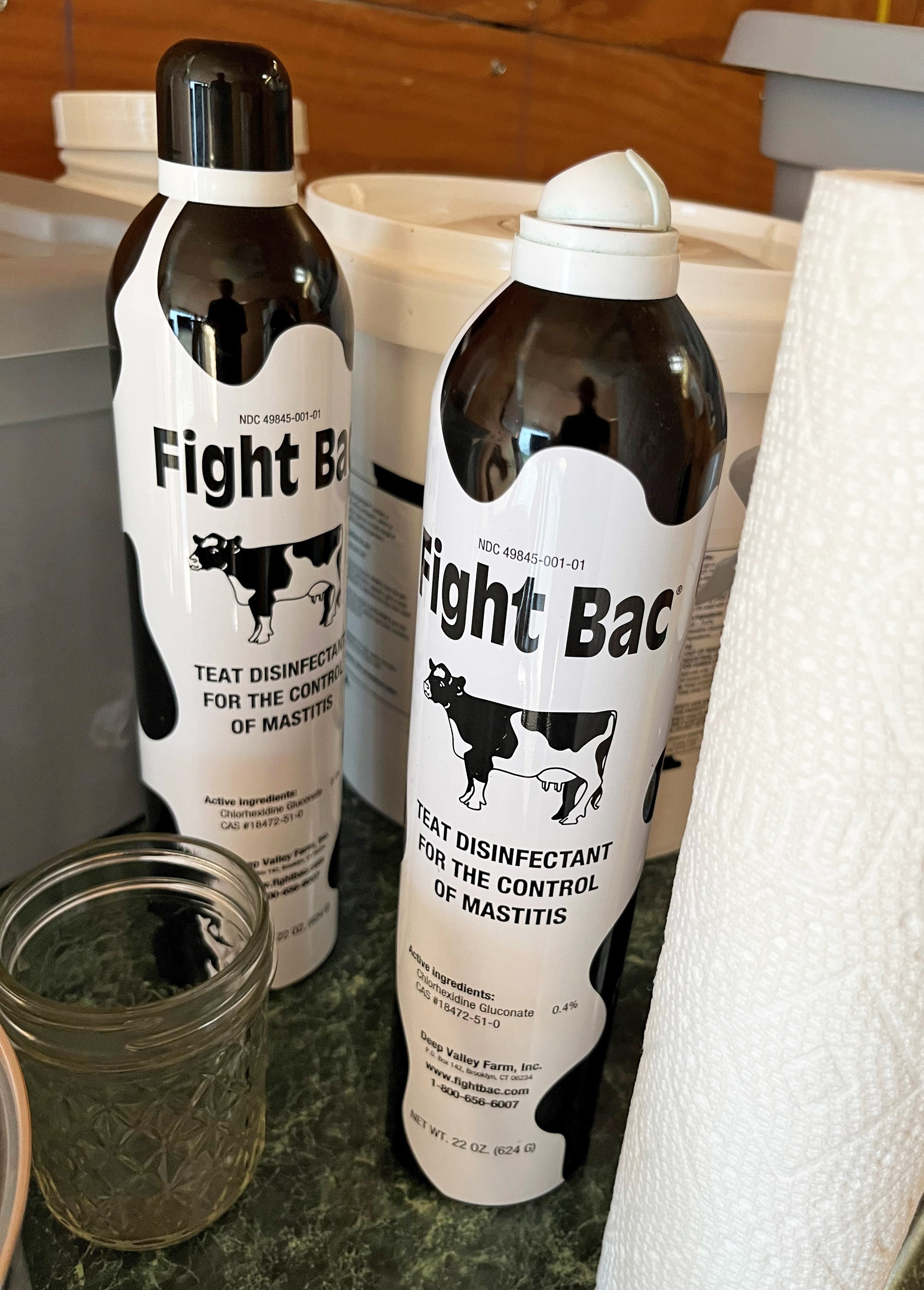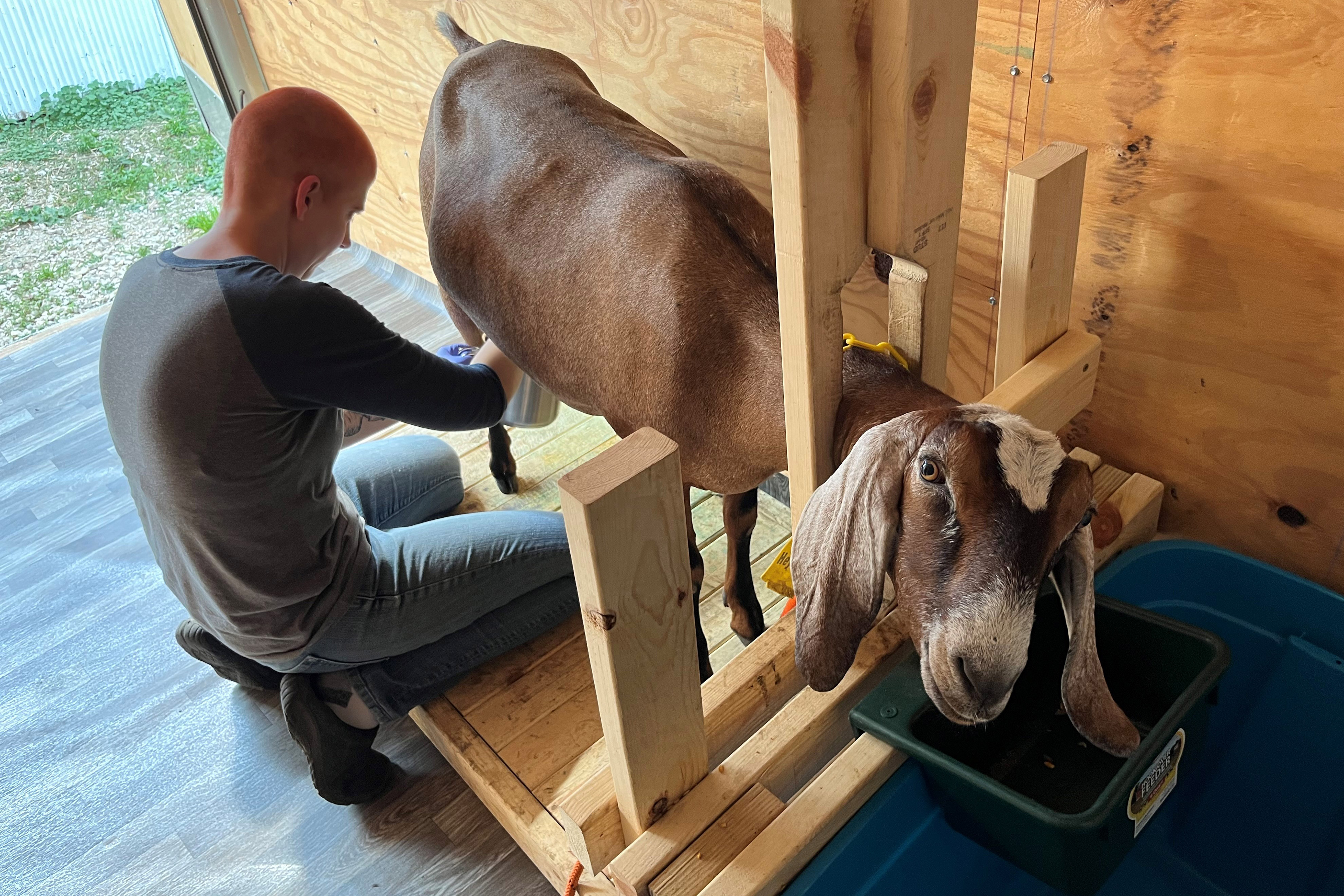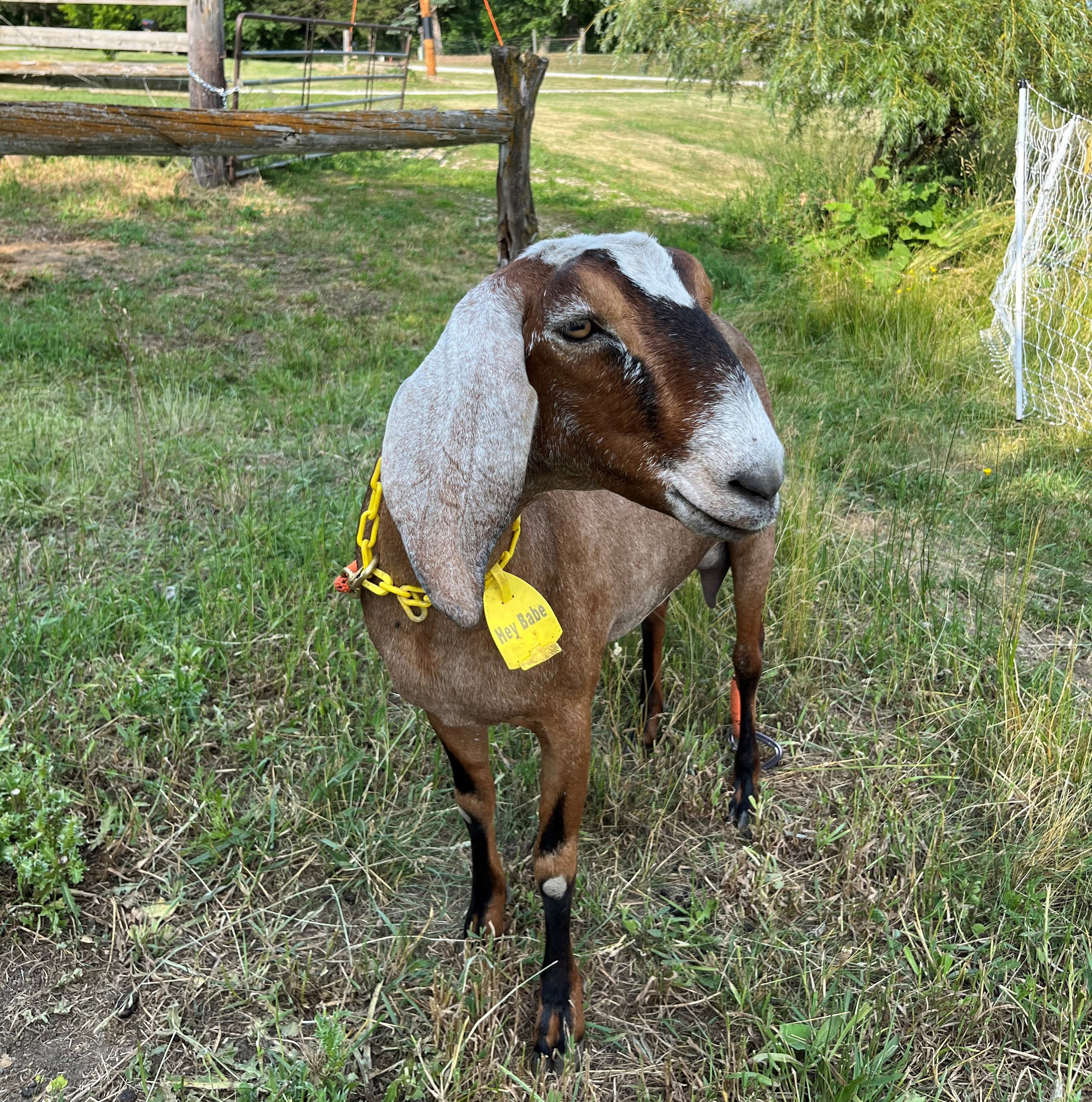This post was originally published on this site
LORIMOR, Iowa — Babe the goat is trendier than she looks.
Babe lives a quiet life on a hillside farm in southern Iowa, where she grazes on grass with a small herd of fellow goats. Her owner, Stacy Wistock, milks her twice a day.
Wistock takes precautions to keep the milk clean, but she rarely pasteurizes it. Until recently, she gave it away to family and friends. Now, she’ll make a little money off it. Iowa legislators decided this spring to join dozens of other states in allowing small producers to sell unpasteurized milk from cows, goats, and sheep.
Public health authorities and major dairy industry groups oppose the practice, saying such milk can be tainted with dangerous bacteria, including E. coli, salmonella, and listeria. But in state after state, those warnings have been overwhelmed by testimonials from fans of “raw milk,” who contend pasteurized milk is more difficult to digest because the process alters enzymes and kills helpful bacteria.
Federal experts say there is no proof that pasteurization makes milk less healthful. People on all sides of the issue say the rising interest in raw milk is fueled partly by distrust of public health authorities, which grew during the covid-19 pandemic.
Wistock is unsure about some of the health claims made by ardent raw milk fans. But she sees the issue as a matter of freedom. “I don’t like restrictive laws about what foods you can and can’t sell to your neighbors,” she said.
Iowa’s new law, which took effect July 1, allows only direct sales from small producers to consumers. The law is stricter than those in several other states, which allow raw milk sales in stores.

Pasteurization, developed in the 1800s, involves heating milk to kill bacteria. The practice was widespread by 1950, helping rein in deadly diseases, including tuberculosis, typhoid, and scarlet fever, according to the Centers for Disease Control and Prevention.
“Most public health professionals and health care providers consider pasteurization to be one of public health’s most effective food safety interventions ever,” the CDC’s website says. It warns that consumption of unpasteurized milk has sparked outbreaks of food poisoning, which can cause diarrhea, vomiting, kidney failure, and even death.
Iowa: A Case Study in Raw Milk’s Evolving Legal Landscape
Eric Heinen, an environmental health officer for northern Iowa’s Black Hawk County, is among the public health officials who worked for years to keep raw milk sales illegal.
He was discouraged but not shocked to see Iowa’s raw milk proposal pass this spring amid growing skepticism of science. “It’s a different atmosphere we’re in right now,” he said.
Heinen said he has no objection to informed adults risking their health by consuming raw milk. But he wishes it weren’t being given to young children, who are particularly susceptible to complications.
He has heard proponents argue that humans got along fine for thousands of years while drinking unpasteurized milk and going without vaccinations. “Then again, the life span 2,000 years ago was a lot less than it is today,” he said, and many more children used to die as infants or toddlers.
Iowa legislators repeatedly rebuffed proposals to legalize raw milk over the past 17 years. The idea finally cleared the Republican-controlled legislature this spring and was signed into law by Republican Gov. Kim Reynolds.
The leading statehouse sponsor, Republican Sen. Jason Schultz, noted during debate that under the bill, raw milk dairies may have no more than 10 animals giving milk. Producers must test the animals monthly for bacteria. The unpasteurized milk must be sold directly from producers to consumers. It can’t be offered in stores, restaurants, or farmers markets. Containers must include labels noting the milk is unpasteurized and has not been inspected by the government.
“By limiting the size of the farm and the methods of distribution, this bill will meet the niche market demand while requiring strong local connections between consumers and producers,” Schultz said during floor debate.
Schultz expressed delight in formally asking his colleagues to “mooooove” the bill to final passage.
The bill was earlier criticized on the Iowa House floor by Rep. Megan Srinivas, a Democrat and infectious disease physician. Srinivas recounted treating children who were seriously sickened by germs in unpasteurized milk.
“Raw milk increases chances of infection by 150 times,” Srinivas told her colleagues. Infected people can then pass on germs, including hepatitis A, shigella, and E. coli, when handling other people’s food, she said. “These outbreaks have public health implications that we cannot ignore.”
A national group, the Weston A. Price Foundation, advises activists who lobby for raw milk legalization in statehouses across the country.
The foundation’s president, Sally Fallon Morell, said that when her group launched its website in 1999, 27 states allowed any sales of raw milk. Only a few states still totally ban it, she said.
Fallon Morell lives in rural Maryland, where she raises Jersey cows and complies with her state’s regulations by selling raw milk with labels saying it is for pets. “There’s no law against eating pet food,” she said.
She contends the public health establishment supports an “industrial system” of farming, and she disputes official reports of raw milk being tied to outbreaks of food poisoning.

From Curious Consumer to Staunch Critic
A vocal opponent of unpasteurized milk acknowledged in an interview that the other side is winning across the nation. “Public health has lost the war on raw milk,” said Mary McGonigle-Martin, a board member of a national food-safety group called Stop Foodborne Illness.
McGonigle-Martin, who lives in California, testified four times over several years against legalization proposals in the Iowa Legislature. She recounted how her son, Chris, became critically ill after drinking raw milk tainted with E. coli in 2006.
McGonigle-Martin said in a recent interview that she bought the milk at a health food store because she hoped a natural diet would help her son, who had attention-deficit/hyperactivity disorder. But Chris, who was 7, became severely ill less than three weeks after starting to drink it.
He spent two months in the hospital, and doctors had to put him on a ventilator and kidney dialysis while his body fought off toxins produced by the bacteria.
McGonigle-Martin wants states that allow sales of raw milk to require testing and training to reduce the danger. Iowa legislators added some precautions before their bill passed, she said, but they didn’t include strong enforcement provisions.
She favors the Iowa law’s 10-animal limit for raw milk producers, but she worries the provision could encourage untrained hobbyists to get into the business. “Producing raw milk is not like growing vegetables in your backyard and selling them,” she said.
Raw milk distribution isn’t totally new in Iowa. Before the law went into effect, several Iowa producers posted online that they offered it via “herd shares.” Under such arrangements, customers purchase a share of a herd, then receive a portion of its milk from the farmer. Proponents contend it’s legal because people are allowed to drink raw milk from their own animals.
Several states have laws explicitly allowing or banning herd share distribution of raw milk. Iowa has no such law, although a spokesperson for the Iowa Department of Agriculture and Land Stewardship said the agency has considered such arrangements to be unpermitted sales of the product.
States have widely varying laws on raw milk, said Alexia Kulwiec, a Wisconsin lawyer and executive director of the Farm-to-Consumer Legal Defense Fund, which advocates for legalization. Some state laws contain language seeming to allow limited distribution but still make it nearly impossible, she said. Florida, Hawaii, Maryland, New Jersey, Nevada, and Wisconsin have some of the highest hurdles, Kulwiec said.
Before Iowa allowed raw milk sales, some consumers loaded coolers into their cars and traveled to neighboring states to buy it. Supriya Jha, a software engineer from the central Iowa town of Runnells, is among them.
Jha has driven monthly to Missouri to buy unpasteurized cow milk for her toddler. The round trip is nearly 200 miles. She plans to buy goat milk from Wistock’s Iowa farm now that it’s legal.
Jha believes properly produced raw milk is healthful and easier for children to digest than pasteurized milk. She said she looks into how raw-milk producers operate before she buys from them. She plans to try some of Wistock’s goat milk herself to see how her body reacts before she feeds it to her daughter.
Jha grew up in India, where, she said, manufacturers are less aggressive in hawking highly processed foods. “I wanted to raise my baby with the old ways,” she said. She also is skeptical of many vaccines that most doctors and public health leaders urge for children. “I don’t trust the medical establishment,” she said, adding she thinks the system pushes profitable products and treatments. “It’s a racket.”

Back at Wistock’s farm, Babe will soon be joined by a few more nanny goats that are ready to be milked. Wistock, who works a full-time remote office job, figures she can make a small profit on the side by milking four goats and selling the milk for $6 a half-gallon jar.
Wistock already runs bacterial tests on milk for her own use, so it won’t be a big adjustment to follow the state’s new testing rules. She has built a small milking parlor in a trailer, complete with a vinyl floor that’s easy to scrub. Before milking, she cleans the goat’s teats with an antiseptic spray and paper towels. Her containers are washed in a dishwasher, then sanitized in a UV light chamber. She catches the milk in a stainless-steel pitcher and strains it through a filter into glass jars.
After collection, Wistock uses her freezer to chill the milk to 38 degrees, then she places it in the refrigerator. She sometimes pasteurizes goat milk before she turns it into cheese, “just to be safe.”
Wistock is confident that the raw milk she’ll sell is clean, but she knows any food product can carry risks. She’s not sure she would feed it to young children or people with weak immune systems. But she won’t ask what her customers plan to do with it. “I’m not going to tell other people what to drink,” she said.
This article was produced by KFF Health News, formerly known as Kaiser Health News (KHN), a national newsroom that produces in-depth journalism about health issues and is one of the core operating programs at KFF — the independent source for health policy research, polling, and journalism.